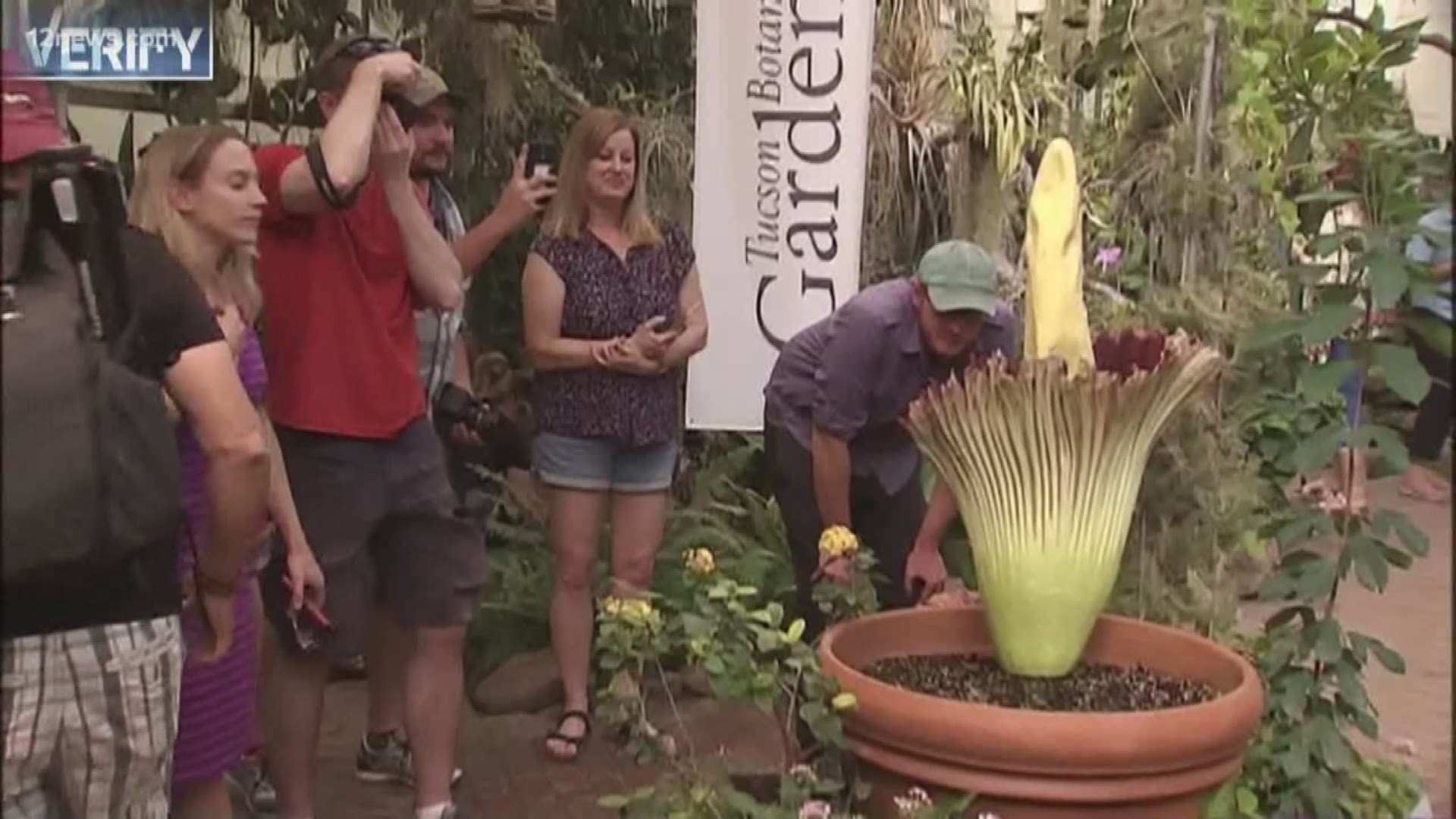PHOENIX — Amorphophallus Titanum is the official name of the corpse flower.
Italian Botanists first recorded this flower in 1878. The first captive bloom was cultivated in England’s Royal Botanical Garden near London in 1889.
A bloom is extremely rare. In fact, prior to 2000, fewer than 50 blooms had been recorded in over a century of cultivation.
“A little more than 100 have bloomed in cultivation ever in history," said Rob Elias, Director of Marketing and Communications at Tucson Botanical Garden.
All eyes are on Tucson's Botanical Garden right now as their very own corpse flower is blooming.
“From what we understand this is the first bloom in cultivation in the state of Arizona, something we are really really excited about," said Elias.
Thousands have come out to get a glimpse.
"We've had really long lines, sometimes a two hour wait," said Elias.
Staff named the plant Rosie, which is the opposite of how it smells.
“Rotting fish, rotting meat, organic potting soil, to me it smelled like really bad body odor," said Elias.
Scientist have analyzed the scent and identified compounds including Isovaleric acid which smells like cheese and sweat. Also Dimethyl Disulphide which smells like garlic and Dimethyl Trisulphide which smells like decomposing meat. Also Indole (feces) and Trimethylamine (rotting fish).
The smell is for a specific reason.
“You can indeed verify that it does smell and the purpose is to attract pollinators to the plant such as beetles, butterflies and flies," said Elias.
The internal color of the bloom resembles raw meat and the spear like structure heats up to roughly the same temperature of the human body to intensify the smell.
“Rosie is already starting to close and 24 to 36 hours after that, the entire flower will collapse," said Elias.
It could be five to 20 more years before Rosie blooms again.
You can watch the live feed at www.tucsonbotanical.org.

